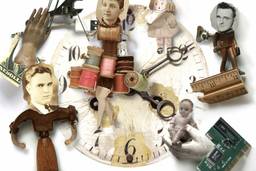Feminism in the Age of Precarity
An interview with historian Alice Kessler-Harris on how the past 30 years have changed women’s workplace demands.
Joanna Scutts

In 1981, Alice Kessler-Harris’ Women Have Always Worked delivered a short, sharp and lasting rebuke to standard U.S. histories that confined women to the domestic sphere. In five tightly argued but wide-ranging chapters, the book laid out the full scope of women’s work since the nation’s founding, from political activism to social reform, wage labor to household management, demonstrating that women have always been central to families, communities and the nation. Kessler-Harris, an emeritus professor of history at Columbia University and an expert in both women’s and labor history, has now updated the book to address the vast changes in women’s professional and public lives over the past 35 years.
Why revise this book now?
AKH: Between 1981 and today, the world changed dramatically. Women’s work has changed and the questions women are facing have changed. Instead of revising the existing chapters, I decided to write a new section dealing with the past 30 years as a whole, looking at economic trends and how those have influenced attitudes about work and women’s expectations. It begins with the conundrum of how to combine work and family.
One theme that emerges is how profoundly social class affects the gains and struggles of women in the workforce.
AKH: In the 1970s, we were making a transition from an industrial society to a postindustrial society and we were asking, as women, for access: to education, to opportunity, to some form of economic equality. Members of the women’s movement used to say, “Just drop the barriers and women will be fine.” But in fact, when those barriers dropped — when medical schools and law schools, for instance, started admitting women — we saw that it wasn’t enough. It helped those who already had access to education, good colleges, cultural capital. But it did virtually nothing for poor women, African-American women and immigrant women.
Then, as middle-class women began to clamor for good jobs, that translated into, “Why shouldn’t all women work?” But of course, middle-class women, who often were married to professional men, could afford housekeepers and child care and so on. Poor women couldn’t.
The consequence of that shift was the Personal Responsibility Act of 1996. Traditional social welfare programs all but disappeared; everything now is “personal responsibility.” The government doesn’t need to support anybody, just find jobs for them. Not wrongly, a lot of people blame that on the women’s movement, which didn’t really think about those class dimensions.
So these positive changes for some women had unforeseen consequences, reshaping the social fabric as they shredded the safety net.
AKH: Yes, and a conflict also emerged around the nature of gender. If women expect to have good jobs, then they will behave with ambition, what Sheryl Sandberg calls “leaning in.” The men who’ve always had access to the good jobs then feel competition from women. We saw that in a tremendous backlash in the 1990s and early 2000s against affirmative action — for African Americans, to be sure, but also for women.
Many so-called “left-behind” workers lost high-paying factory jobs, while their wives were in the workforce. They didn’t know what it meant to be a man anymore, because they couldn’t support their families. Whole questions of masculinity are now up for grabs, and that reverberates in the political sphere. In the 2016 election, the Rust Belt states — Michigan, Wisconsin, parts of Pennsylvania, Ohio — voted for Donald Trump.
Another major shift you describe over the past 30 years is the move toward part-time, insecure labor, which has affected both men and women but has had a huge impact on women.
AKH: The proportion of precarious work — part-time and temporary, independent-contractor work — has increased dramatically for both men and women in the last 20 years. But the proportion of women who do this kind of work is about double the proportion of men. Precarious work makes caring for small children even more difficult. People who work for places like Walmart are told to be on call at all times.
And, ironically, the marker of elite success now is being the person who works the longest hours.
AKH: I always opposed Sheryl Sandberg’s Lean In strategy. Instead of attacking the individualistic system — the corporate marketplace, that dog-eat-dog world—Lean In bought into it and helped you play the game. For my part, I saw it as not really a feminist strategy. At least rhetorically, early feminism had a collective impulse, and although we didn’t live up to it a lot of the time, we had a sense of women as a group, and of the social good.
Do you see the seeds of that collective impulse again?
AKH: Yes. I think we first saw it in the Women’s March. Last summer I was struck by the numbers of people carrying signs that linked women’s issues to other issues, recognizing that the women’s movement needs to cross intersectional lines: Black Lives Matter, reproductive rights, welfare, equal pay for equal work, the environment. Even some “I’m a socialist” signs.
I don’t think we’re any longer asking to be equal to men. We’re asking for fair human rights, what the Swedish call jämställdhet—a concept that imagines not just women equal to men, but gender equality as the basis for human equality. In Sweden, it manifested in the solidarity pay policies, which meant limits on the top and pushing the bottom up. Minimum wages were livable; there was no poverty that we would call poverty.
That’s what I think feminists are fighting for now. We’re having new discussions about basic income — which we saw briefly in the Nixon administration, actually, in the early 1970s, but which Nixon rejected — and about social policies that benefit everybody, like paid parental leave and minimum wages that are adequate to live on.
Maybe I’m being optimistic — these demands are relatively new — but I don’t think they’ll go away.
People understand that neoliberal corporate market ideology is not a pro-worker policy, whether that worker is male or female. In the midterm elections, in the Rust Belt states, men — particularly unionized or formerly unionized men — turned away from the Republicans and were voting for Democratic candidates. With the women, we might say.








